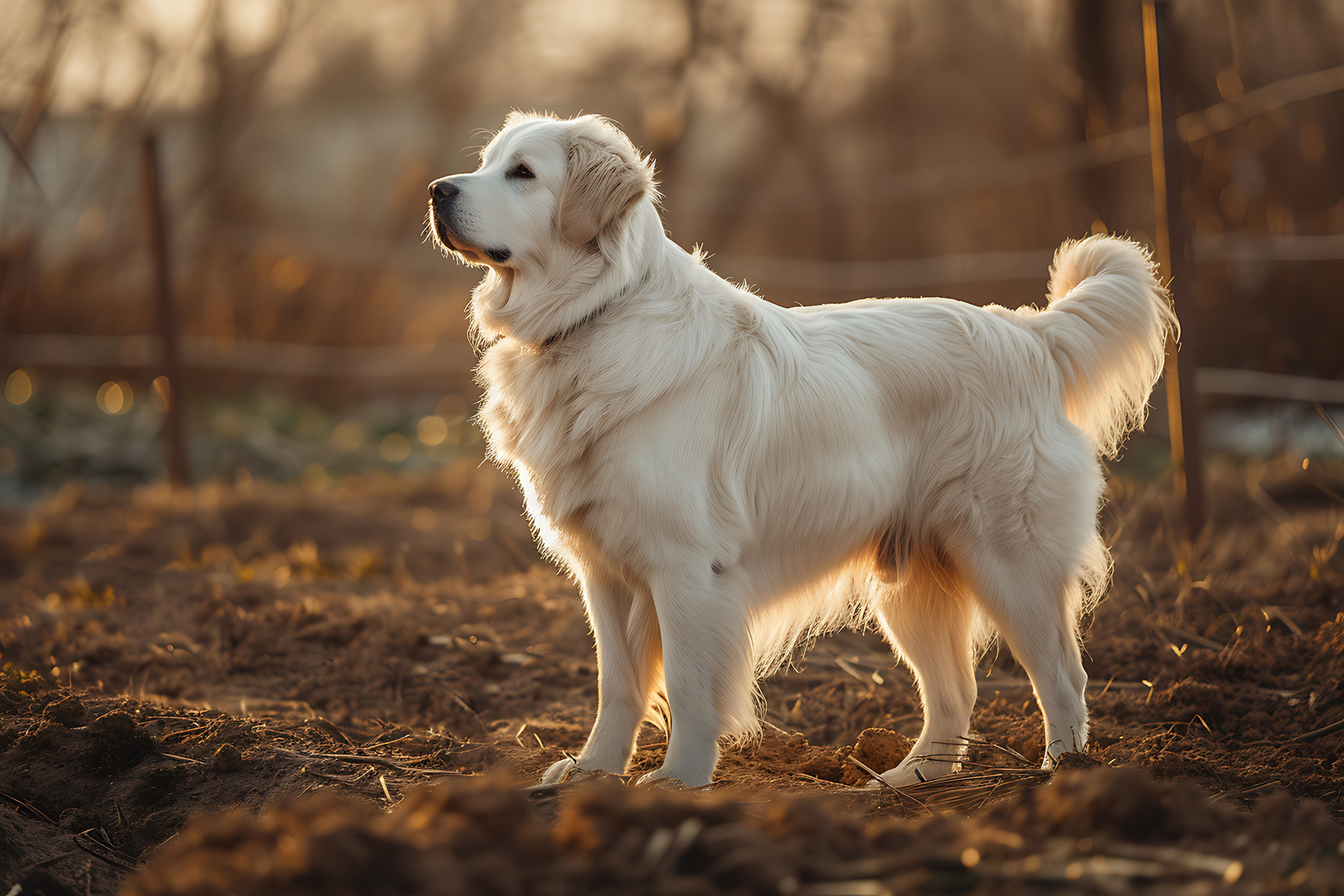Great Pyrenees

Description
The Great Pyrenees, also known as the Pyrenean Mountain Dog, is a majestic and gentle giant originally bred to guard livestock in the rugged mountains of southern France and northern Spain. With its history dating back over a thousand years, the Great Pyrenees was developed to protect flocks of sheep from predators like wolves and bears. Today, it is cherished not only for its protective instincts but also for its calm demeanor and affectionate nature, making it a beloved companion for families and individuals alike.
Physically, the Great Pyrenees is a large and imposing breed, standing between 25 and 32 inches at the shoulder and weighing between 85 and 115 pounds. Despite its size, the breed is known for its graceful movement and strong, sturdy build. Its thick double coat, which is typically white, though sometimes with tan, gray, or badger markings, is weather-resistant and designed to protect the dog in cold, mountainous environments. The breed’s dense coat requires regular grooming to prevent matting, especially during shedding seasons. The Great Pyrenees has a proud and noble appearance, with a broad head, dark, expressive eyes, and a strong, confident posture that reflects its centuries-old guarding heritage.
The Great Pyrenees is known for its independent, calm, and gentle nature. While it has an innate guarding instinct, it is not aggressive, and it is typically calm and friendly with its family members, including children and other pets. The breed’s natural protectiveness makes it an excellent guardian, whether for livestock or as a family protector. However, it is not overly territorial or aggressive toward strangers unless it perceives a threat, at which point it will take its role as a guardian seriously. The Great Pyrenees is intelligent and independent-minded, which can sometimes make training a challenge, but with consistent, positive reinforcement, it can learn to be well-behaved. Early socialization is essential to help the dog become comfortable around a variety of people, animals, and environments.
Due to its working background, the Great Pyrenees requires regular exercise to stay fit and healthy, but it is generally not as high-energy as some other large breeds. It enjoys daily walks and will happily accompany its family on outdoor adventures, but it is also content to lounge around the house, especially when it has been mentally and physically stimulated. The breed’s independent nature means it may not always respond to commands with the same enthusiasm as more eager-to-please breeds, so patience and consistent training are essential. The Great Pyrenees thrives in homes with space, such as homes with large yards, but it can also adapt to suburban or rural living, provided it has enough room to move around.
In conclusion, the Great Pyrenees is a loving and noble breed, known for its gentle temperament, loyalty, and natural guarding abilities. Its calm demeanor, combined with its protective instincts, makes it a wonderful companion for families and individuals who can meet its exercise and grooming needs. The Great Pyrenees excels as a protector of both people and property, yet it is also a deeply affectionate and loyal family dog. With its striking appearance and loving nature, the Great Pyrenees is a breed that thrives in environments where it can be both a guardian and a cherished companion.
History
The Great Pyrenees, also known as the Pyrenean Mountain Dog, is a majestic and ancient breed that has served as a guardian and companion for centuries. Its origins trace back to the Pyrenees Mountains, which form the natural border between France and Spain. The breed is believed to have descended from large, white mountain dogs that accompanied nomadic shepherds and their flocks thousands of years ago, possibly introduced to the region by Central Asian traders or early migrations. These dogs were essential to the survival of sheep and goats, protecting them from predators such as wolves and bears in the rugged, mountainous terrain.
The Great Pyrenees earned its reputation as a reliable and fearless guardian, capable of working independently to protect livestock without constant supervision. By the Middle Ages, the breed had become a valuable asset not only to shepherds but also to the French nobility. Its striking appearance and noble demeanor made it a favorite among the aristocracy, and it was even designated the official dog of the French court by King Louis XIV in the 17th century. Despite its association with nobility, the breed remained a working dog at heart, continuing its role as a livestock guardian in rural areas.
In the 19th and 20th centuries, the Great Pyrenees gained recognition outside its native region. It was introduced to North America, where it quickly found a role as both a working dog and a family companion. The breed was officially recognized by the American Kennel Club in 1933. Efforts to preserve and promote the breed’s traditional characteristics have ensured its continued success as a reliable guardian and a gentle, loyal companion.
Today, the Great Pyrenees is cherished worldwide for its intelligence, calm temperament, and protective instincts. While it is still used as a working dog in some regions, it has also become a popular family pet, known for its affectionate and gentle nature with children. The breed’s long history as both a protector and companion highlights its enduring appeal and versatility.
Colors
• Badger
• Grey
• Red
• Tan
• White


